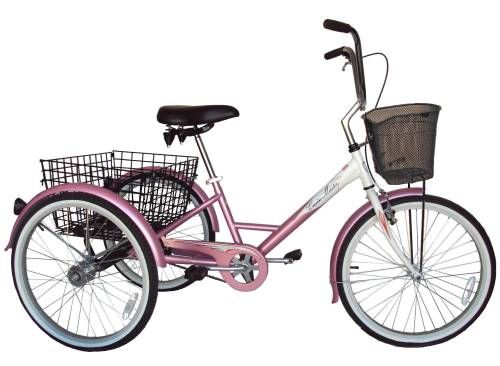In the quest for sustainable transportation solutions, electric tricycles have emerged as a promising alternative to traditional automobiles. These three-wheeled vehicles are gaining popularity worldwide due to their numerous environmental and practical benefits. Electric tricycles often referred to as e-trikes, offer a unique combination of affordability, efficiency, and eco-friendliness that is revolutionizing urban mobility. Eco-Friendly Transportation: One of the primary reasons electric tricycles are gaining traction is their environmental friendliness. Unlike conventional gasoline-powered vehicles, e-trikes produce zero tailpipe emissions. They run on electricity, which can be generated from renewable sources, reducing their carbon footprint significantly. As urban areas grapple with air quality issues and climate change concerns, e-trikes provide a cleaner and greener transportation option that contributes to reduced air pollution and greenhouse gas emissions.
Affordability and Accessibility: Electric tricycles are generally more affordable than electric cars or traditional motorcycles, making them an attractive option for a wide range of individuals, particularly in developing countries. Their lower upfront cost and reduced operating expenses, thanks to lower maintenance and charging costs, make them an economically viable choice for many. This affordability factor promotes inclusivity and accessibility, allowing more people to participate in sustainable urban mobility solutions.

Reduced Traffic Congestion: Traffic congestion is a growing problem in cities worldwide, leading to wasted time, increased fuel consumption, and stress for commuters. Electric tricycles, with their smaller footprint and maneuverability, electric tricycle can help alleviate congestion. They can navigate through tight spaces and narrow streets, reducing traffic bottlenecks. Moreover, they are an ideal option for last-mile connectivity, helping commuters reach their final destinations more efficiently without relying on larger vehicles.
Improved Air Quality: As electric tricycles gain popularity in urban areas, they contribute to improved air quality. By reducing the number of gasoline and diesel vehicles on the road, e-trikes help decrease harmful emissions such as nitrogen oxides (Knox) and particulate matter (PM). This, in turn, leads to cleaner and healthier air for city residents, reducing the risk of respiratory illnesses and improving overall well-being.
Job Creation and Local Economies: The production and adoption of electric tricycles also have positive economic implications. E-trike manufacturing and maintenance create jobs in local communities, contributing to economic growth. Additionally, the widespread use of e-trikes can reduce the reliance on imported fossil fuels, which can positively impact a country’s balance of payments and reduce vulnerability to global oil price fluctuations.
Battery Technology Advancements: Advancements in battery technology have played a pivotal role in the success of electric tricycles. Lithium-ion batteries, with their improved energy density and longevity, have made e-trikes more practical and reliable. These batteries can be charged quickly and have a longer lifespan, making them suitable for daily urban commutes. As battery technology continues to evolve, e-trikes are likely to become even more efficient and affordable.